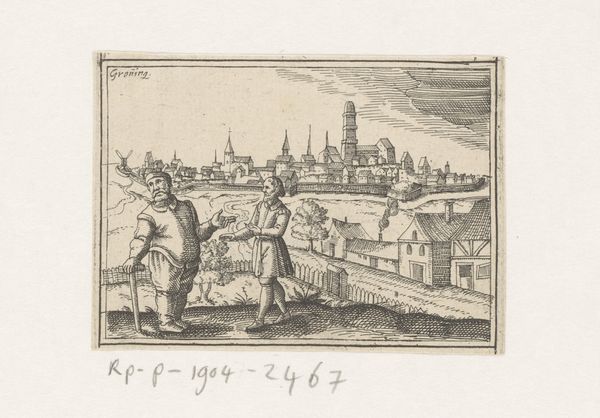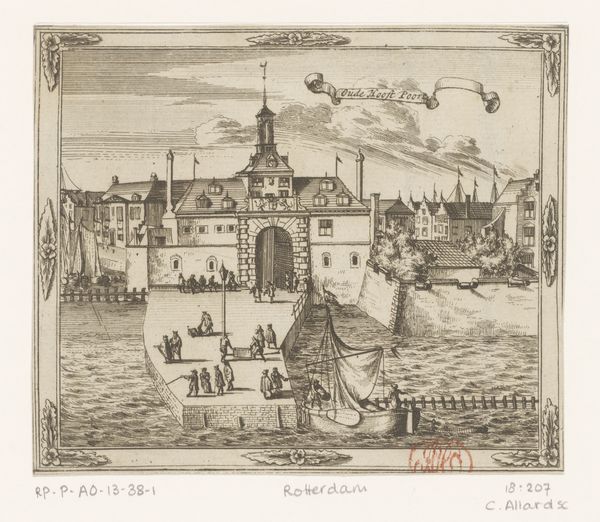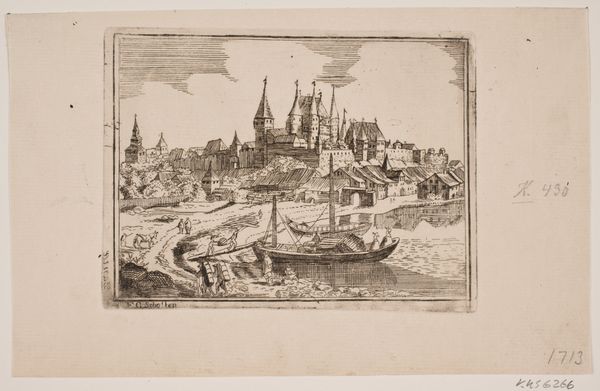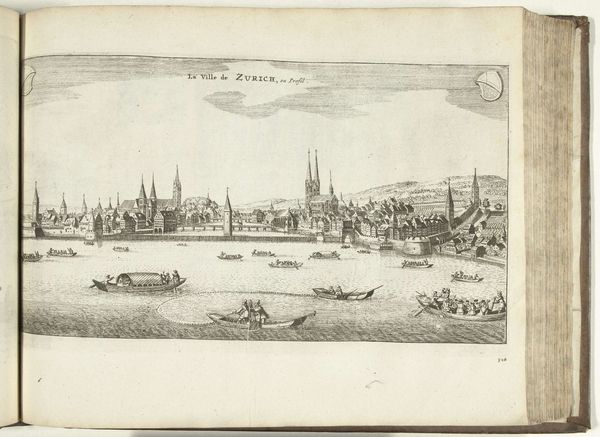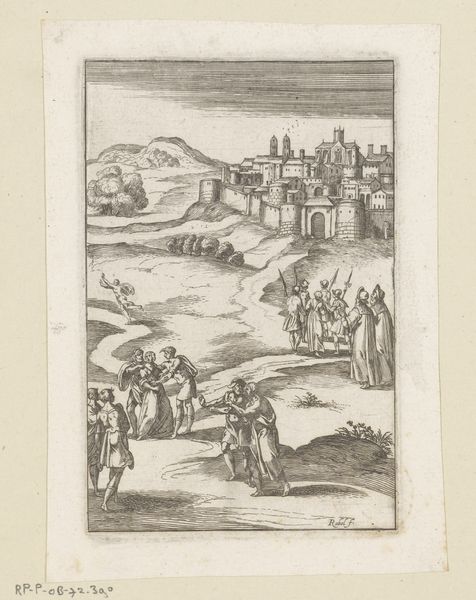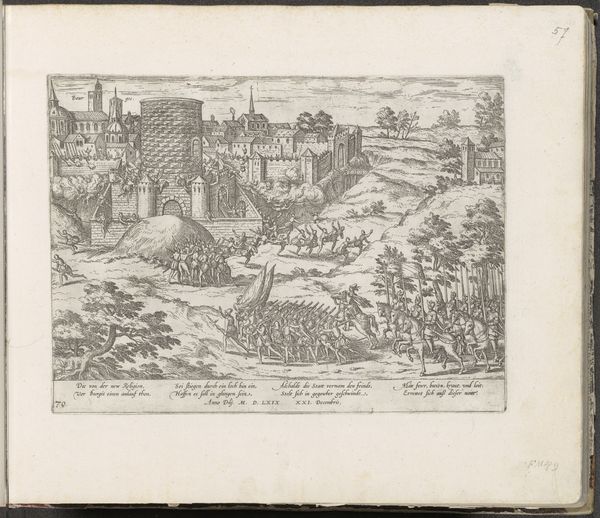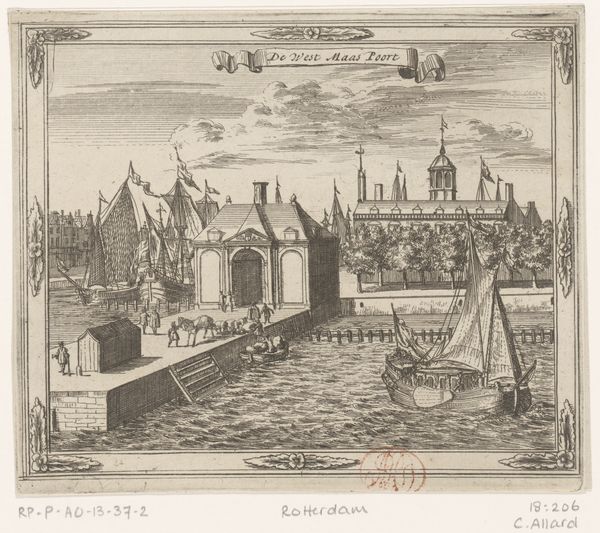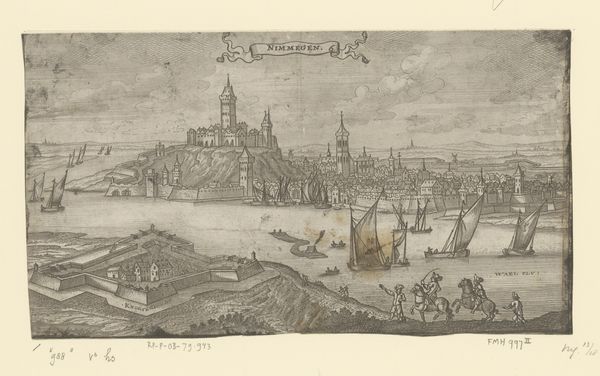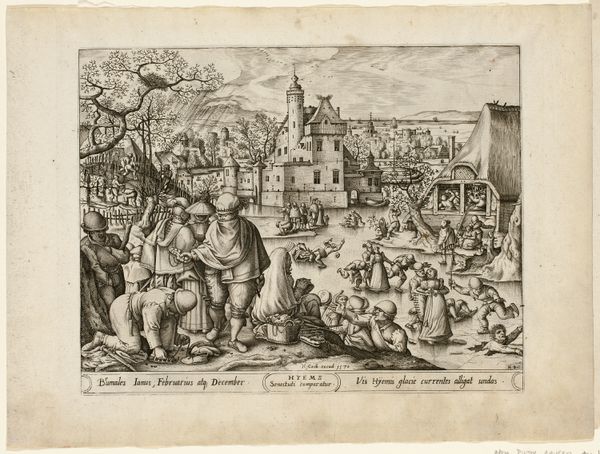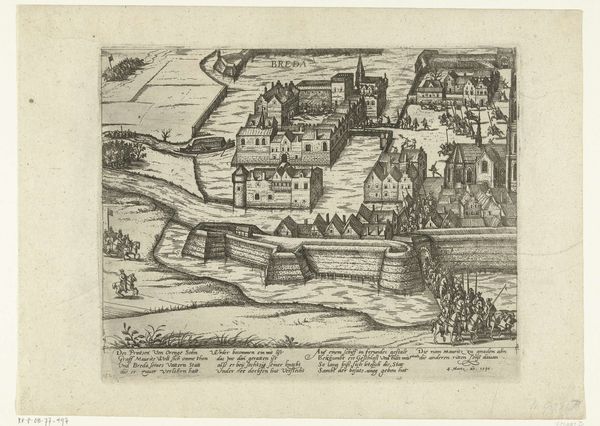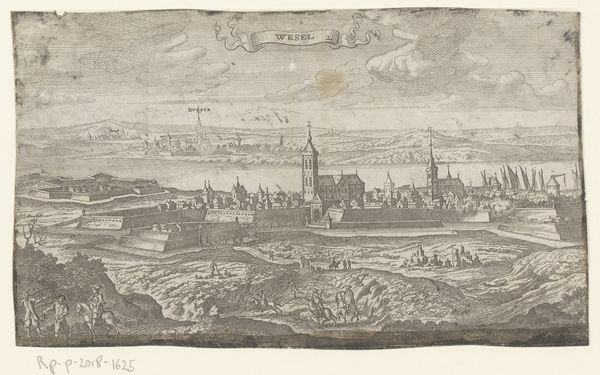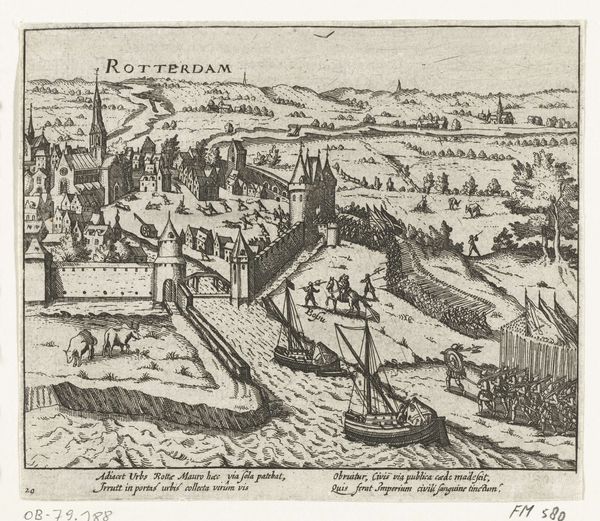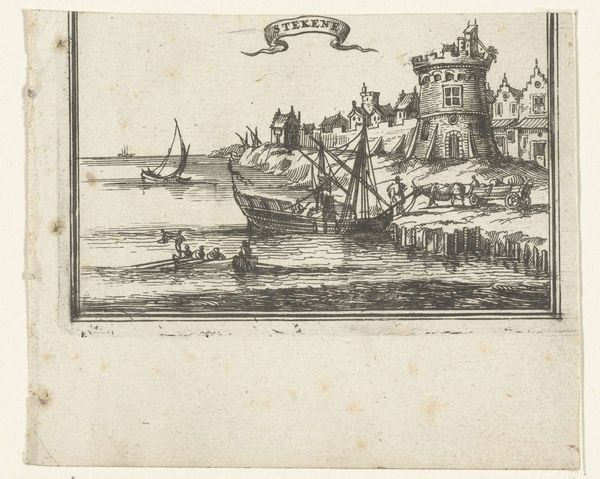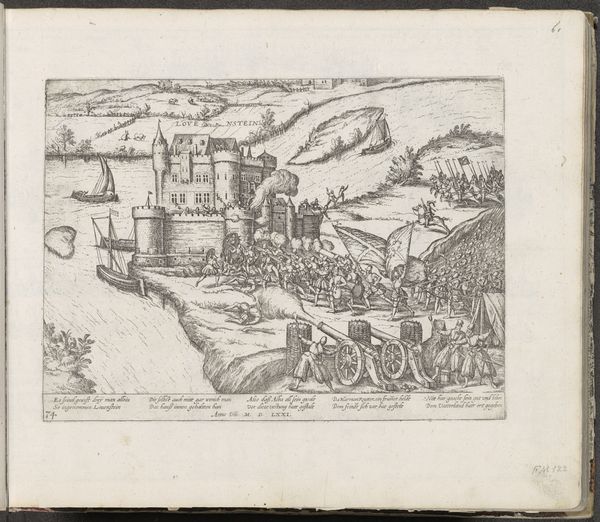
print, engraving
#
baroque
# print
#
pen sketch
#
pencil sketch
#
old engraving style
#
landscape
#
line
#
cityscape
#
genre-painting
#
engraving
Dimensions: height 60 mm, width 85 mm
Copyright: Rijks Museum: Open Domain
Curator: Immediately I'm struck by the landscape. It feels both ordered and whimsical. Editor: You’ve keyed right into the feeling this engraving evokes. This is "View of Nuremberg with Puppet Players," made around 1624 by Daniel Sudermann. It depicts a bustling Nuremberg, a German city then known for its commerce and craftsmanship. Curator: Puppets... such ancient symbols! In so many cultures, puppets are associated with the idea of fate, manipulation by higher powers, or simply, the theatre of life. Even the city seems like a stage set, rising in the background. Editor: Yes, and considering Nuremberg's own complicated narrative through the centuries, that theatricality you perceive resonates even more strongly. Look at how the puppet players are situated, though—in the foreground, almost literally wrestling for our attention against the imposing backdrop of the city itself. Who holds power, truly? Is it the grand institutions, or the everyday entertainers? Curator: That question of power is always at play. The architecture reaches skyward, toward presumed divine authority. But it is the people—with their traditions, stories, and the small, shared joys they create—that animate the scene. These figures become vessels of cultural continuity. What can you tell from how the women carry babies—or are they dolls? What were the puppeteers actually staging? I wish we knew more. Editor: I appreciate your focus on the players, who are after all marginalized in their placement. I consider also who had access to the image. As a print, its circulation was perhaps broader than a painting but that isn't the same as wide access. Then and now the people, puppets or human, often remain symbols in ways they cannot fully control. Curator: Yet in seeing the image now, across centuries, perhaps our very focus grants them new layers of visibility—allows us to question the narratives and powers they symbolize anew. Editor: Absolutely. By examining this artwork through its historical context and considering its resonance, we can encourage ongoing reflection about identity, narrative control, and political agency. It's about encouraging conversations, bridging the past and the present, and questioning how cultural expressions shape our perceptions of ourselves and others.
Comments
No comments
Be the first to comment and join the conversation on the ultimate creative platform.
